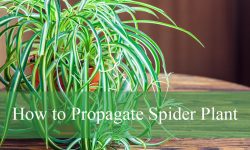Terrariums offer a beautiful and low-maintenance way to bring nature indoors, whether you prefer the humidity of a closed glass environment or the airflow of an open one. Choosing the right plants is key to creating a thriving, balanced ecosystem inside your terrarium.
From lush, moisture-loving ferns to hardy, drought-tolerant succulents, this guide highlights 42 of the best plants that can thrive in both open and closed terrariums, helping you craft the perfect miniature garden for any space.
Different Types of Best Terrarium Plants
String of Hearts
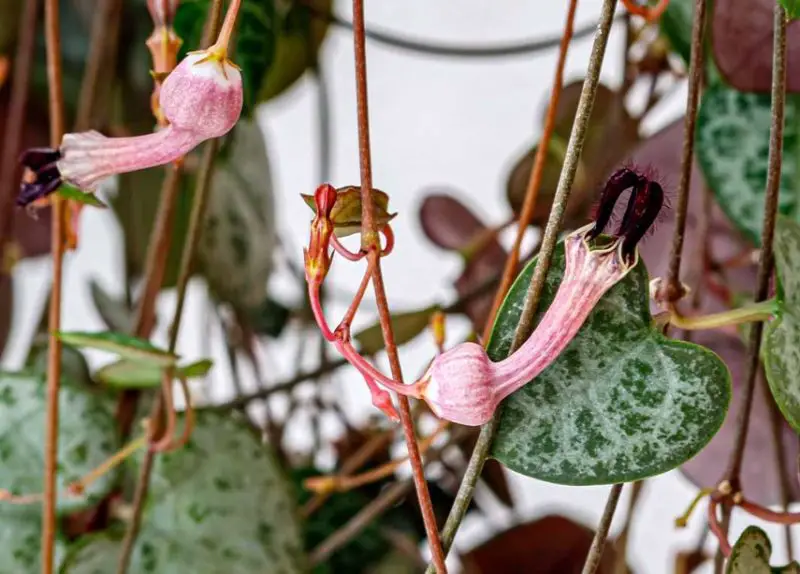
The String of Hearts, or Ceropegia woodii, features trailing vines with tiny, heart-shaped leaves that are vibrant green with charming silver-gray marbling.
Ideal as a Valentine’s Day gift, this plant thrives in open terrariums, where its leaves can crawl along the soil or hang over the edges. As a semi-succulent, it prefers dry soil and well-draining sandy substrates, as excess moisture can lead to root rot and affect other plants in the terrarium.
Peace in the Home
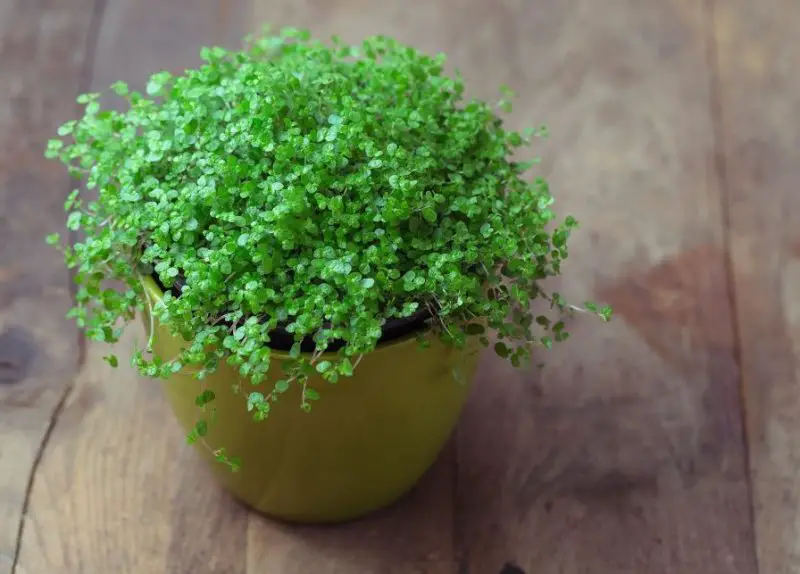
Peace in the Home, or Soleirolia soleirolii, features a lush green carpet of tiny, delicate leaves that densely cover the ground, creating a soft, verdant appearance.
Also known as Baby’s Tears, this plant is perfect for compact terrariums, quickly filling gaps with its vibrant foliage. However, it can be tricky to care for; overwatering and too much shade are common issues. For optimal growth, keep the soil consistently moist (but not soggy) and provide plenty of bright indirect light.
Aluminum Plant
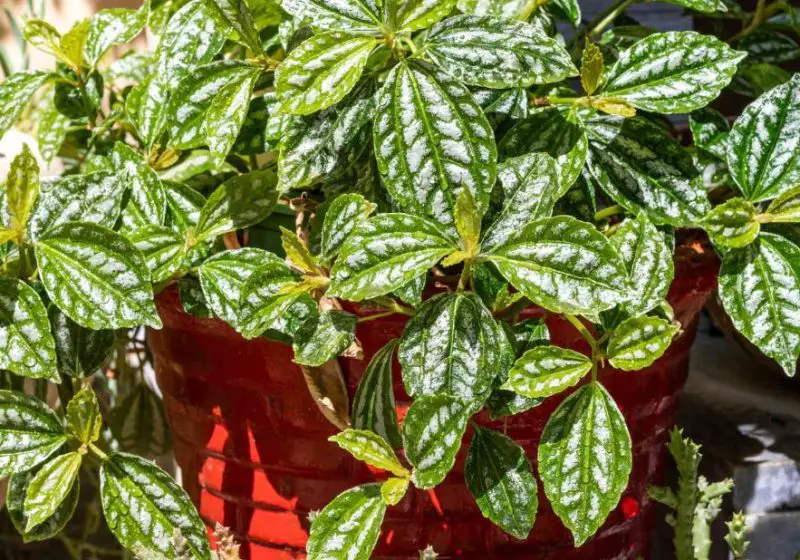
The Aluminum Plant, or Pilea cadierei, is a striking focal point in any indoor garden. Its uniquely patterned leaves, adorned with silver stripes, resemble watermelon skin, creating an eye-catching display.
Also known as Watermelon Pilea, this plant thrives in larger terrariums, making it an excellent centerpiece in bright indirect sunlight. Due to its taller growth habit, it works best as a central feature plant, where its shimmery foliage can enhance the beauty of your arrangement.
Pothos
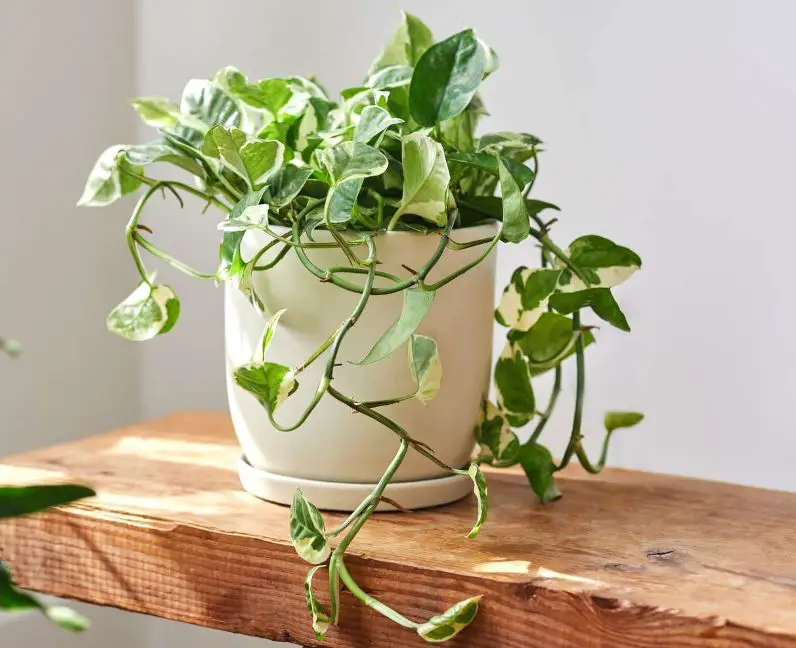
The Golden Pothos, or Epipremnum aureum, is a beloved houseplant. Its heart-shaped green leaves thrive in decorative wicker pots, while its vines can trail or climb, creating a lush appearance.
Resilient and adaptable, Golden Pothos excels in various conditions, making it a must-have for terrariums. These fast-growing vines fill larger spaces with abundant foliage, and with numerous cultivars available, there’s something for everyone. Just avoid overwatering, especially in closed terrariums, for optimal success.
Radiator Plants
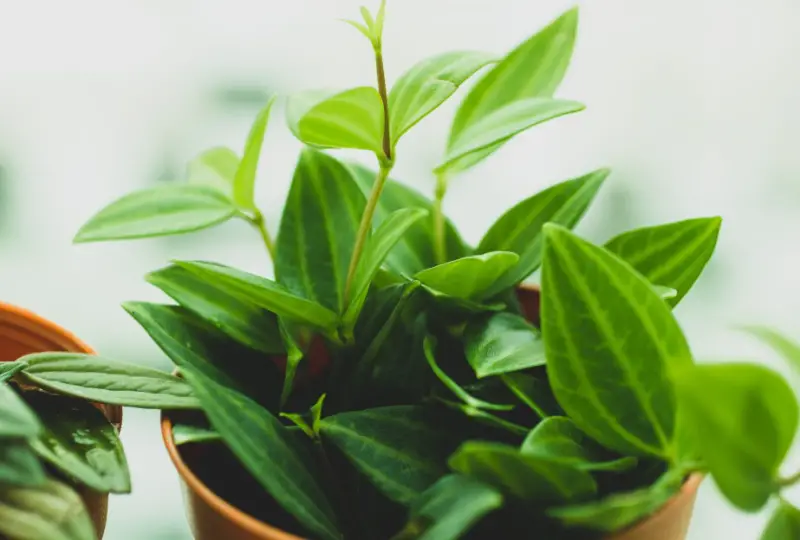
Peperomia caperata, or Ripple Peperomia, is a charming houseplant with heart-shaped leaves featuring deep ridges and a rich dark burgundy color. A close-up shows it held in a small black pot, highlighting its unique texture.
Ideal for terrariums, this compact plant adds delightful color and intrigue, making it a favorite among enthusiasts. The smaller Peperomia caperata thrives in terrariums, while Peperomia rotundifolia can trail close to the soil. With the right care, you might even see them flower, enhancing your terrarium experience.
Button Fern
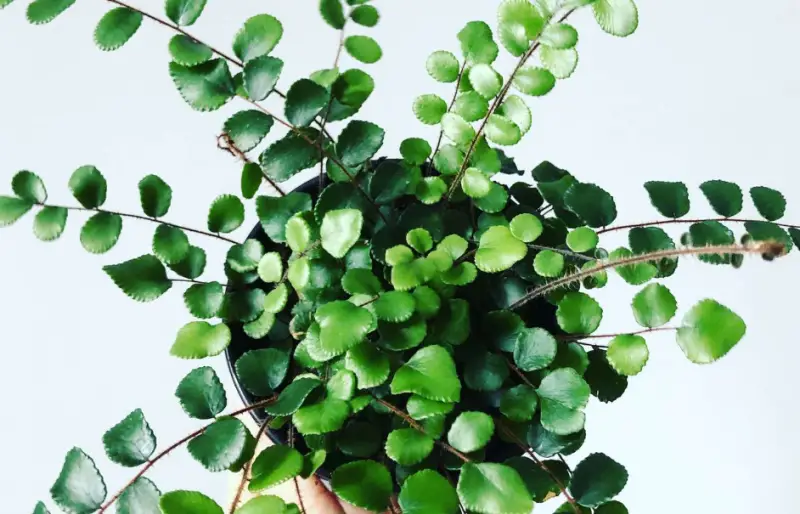
The Button Fern, or Pellaea rotundifolia, features delicate, round leaves on long, slender fronds, giving it a unique appearance.
Perfect for closed terrariums, this compact fern adds jungle elegance with its adorable button-shaped leaves. Growing to about 12 inches tall, it thrives in the moist, high-humidity environment typical of terrariums, making it an ideal choice for creating a lush indoor landscape.
Creeping Fig
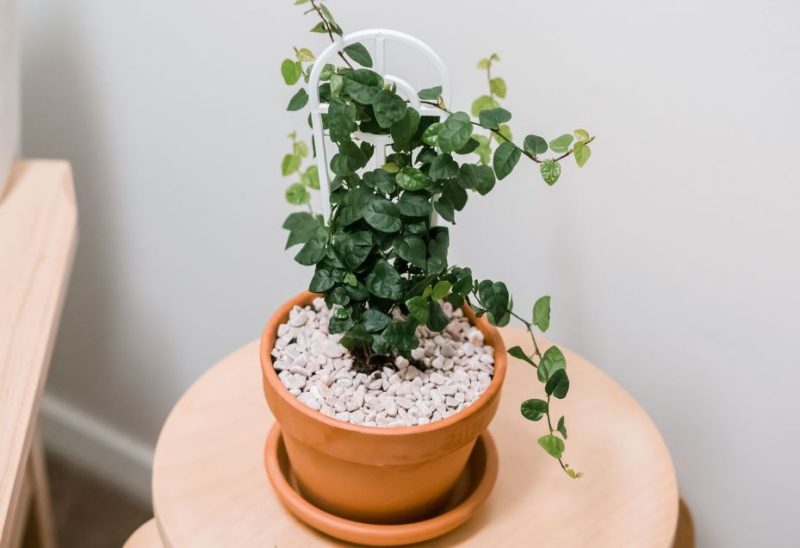
The Creeping Fig, or Ficus pumila, is a compact vine that thrives in sunlight, showcasing small, heart-shaped, dark green leaves with a glossy finish.
Unlike many taller Ficus species, Ficus pumila is ideal for terrariums due to its dwarf size. This vine is a great alternative to ivy, easily climbing walls and filling soil gaps in closed terrariums. It can also be attached to wood or rocks for added artistic flair.
African Violet
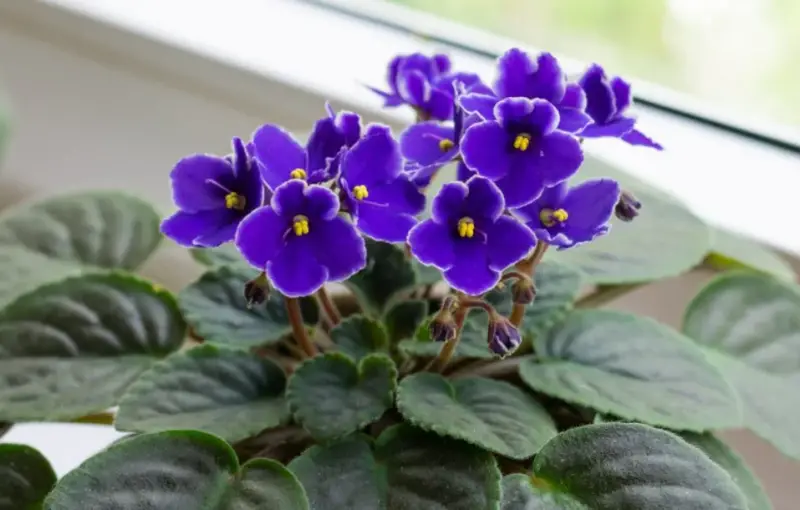
The African Violet, or Saintpaulia, showcases fuzzy, heart-shaped dark green leaves and small, five-petaled purple flowers with cheerful yellow centers in a white pot on a light windowsill.
Known for reliable indoor flowering and native to Africa, African Violets are houseplant staples. Their compact size makes them perfect for terrariums, but moisture levels must be monitored closely to prevent unsightly spots on leaves and base rot. With proper care, they can bloom nearly all year round, adding vibrant color to your indoor space.
Miniature Orchids
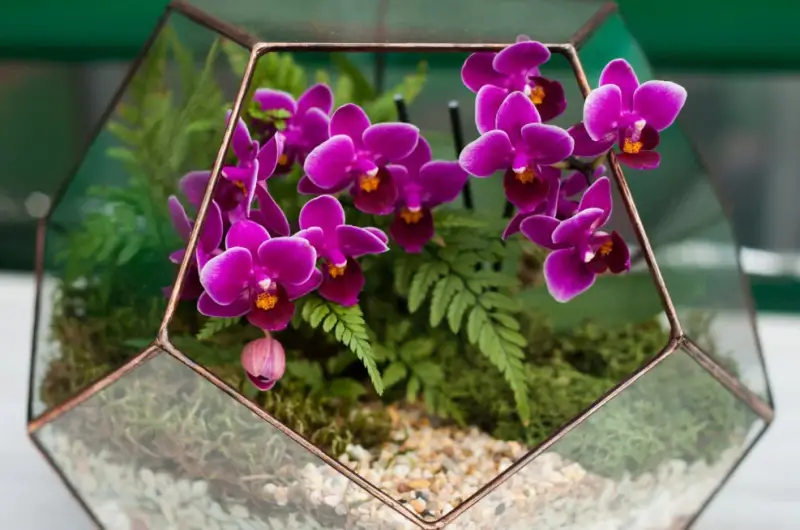
Miniature orchids feature long, thin stems and shiny oval leaves. Their delicate flowers display white petals with rich purple veins, making them truly elegant.
These compact orchids thrive in high humidity, making them ideal for terrariums with the right potting medium. Care can be challenging, but maintaining high humidity and using loose orchid bark or attaching roots to wood helps them flourish. Opt for a terrarium with a wide opening to protect growing flower spikes.
Silver Sparkle Pilea
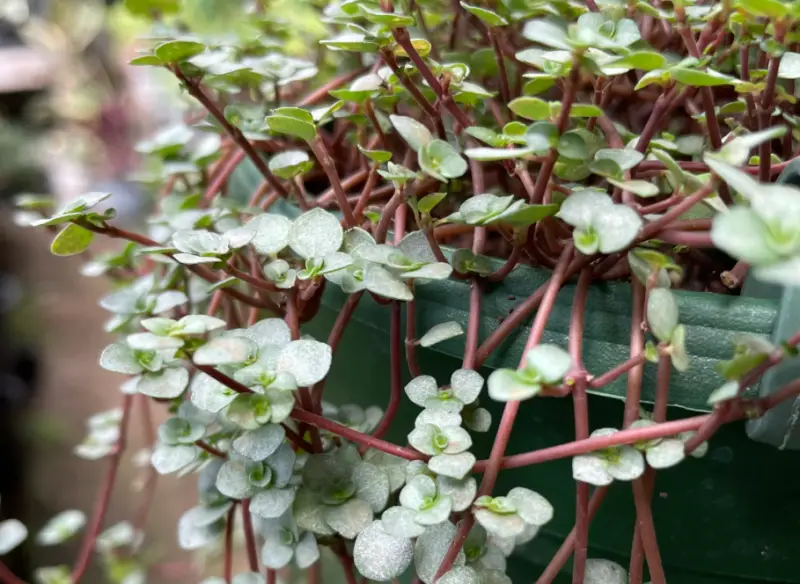
The Silver Sparkle Pilea, or Pilea libanensis, showcases small, round leaves with shimmering silver speckles in a vibrant red-orange pot. This compact, trailing plant adds a captivating touch to indoor spaces.
Often labeled Pilea glauca or even Pilea aquamarine, its adaptability for terrariums is clear. Its tiny silver leaves can cascade over the edges of containers, and you can trim stems to root in your terrarium or use a single large plant. This flexibility makes it ideal for small terrariums or artistic plant projects, enhancing your indoor garden.
String of Turtles
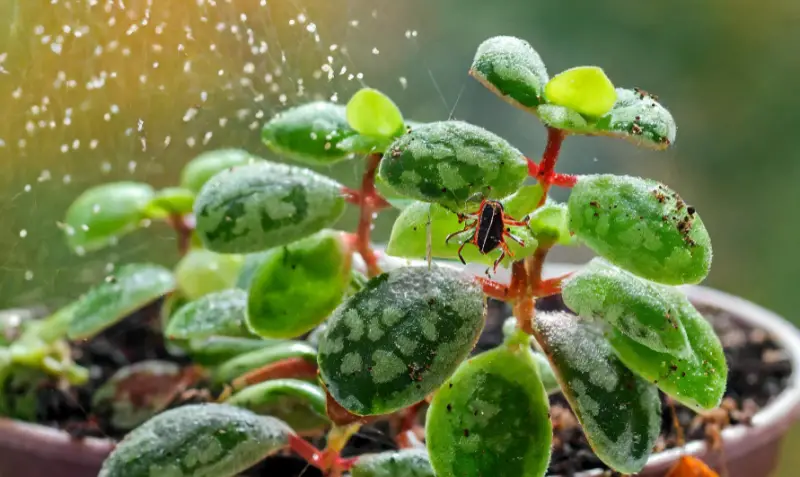
The String of Turtles, or Peperomia prostrata, features long, trailing vines with small, round leaves resembling a turtle’s shell pattern, enhancing its allure.
As a member of the Peperomia genus, it’s perfect for terrariums due to its adorability and compact nature. To plant, simply trim and root individual vines, making it easy to fit into narrow openings. With its delightful aesthetic, this plant enhances any terrarium display.
Spider Plant
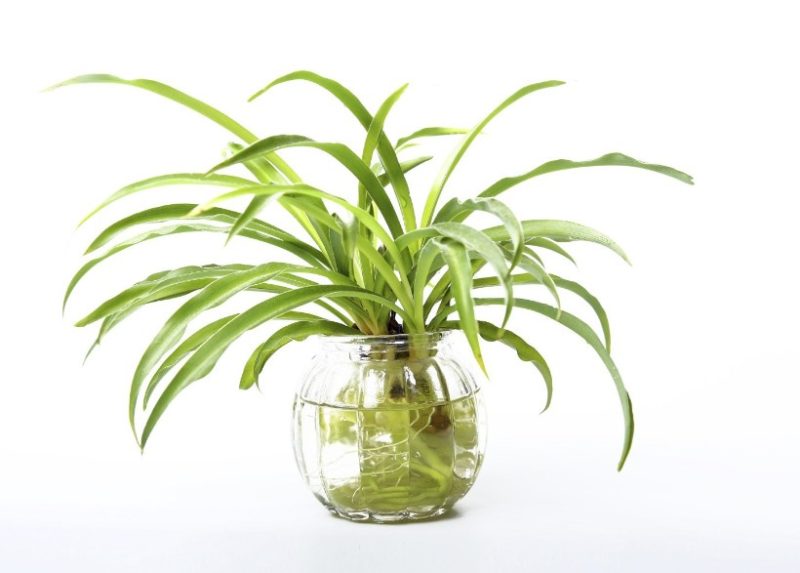
The Spider Plant, or Chlorophytum comosum, features long, arching leaves with striking white stripes, creating an attractive, spiky appearance.
Best suited for open environments, Spider Plants thrive in high humidity and are popular among beginner gardeners. Tiny pups can easily be planted in smaller containers.
While they can survive in closed terrariums, they require careful watering to avoid rot.
Polka Dot Plant
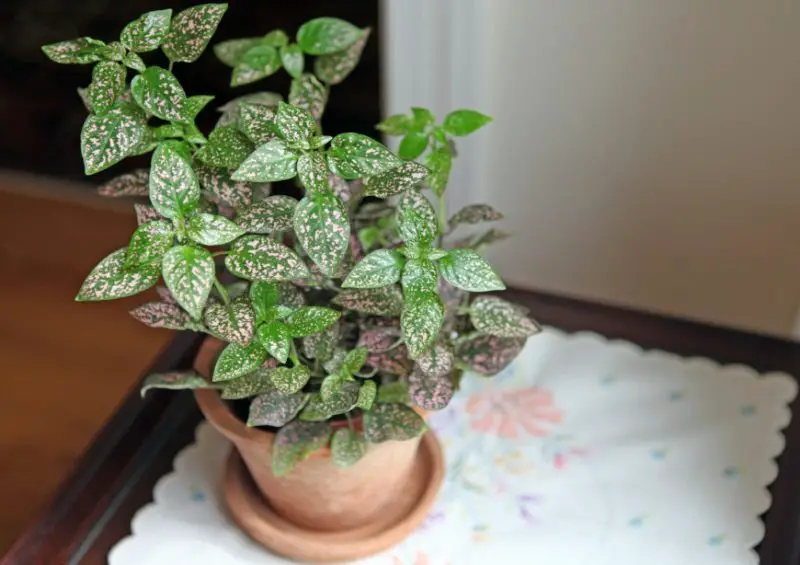
The Polka Dot Plant, or Hypoestes phyllostachya, features dark green, elliptical leaves adorned with distinctive pink spots.
Its compact size and love for humidity make it perfect for closed terrariums. The unique spotted foliage comes in various bright colors, with the spotty pink variety being especially popular.
Incorporating a Polka Dot Plant into your terrarium guarantees a delightful burst of color that’s hard to replicate with other plants.
Nerve Plant
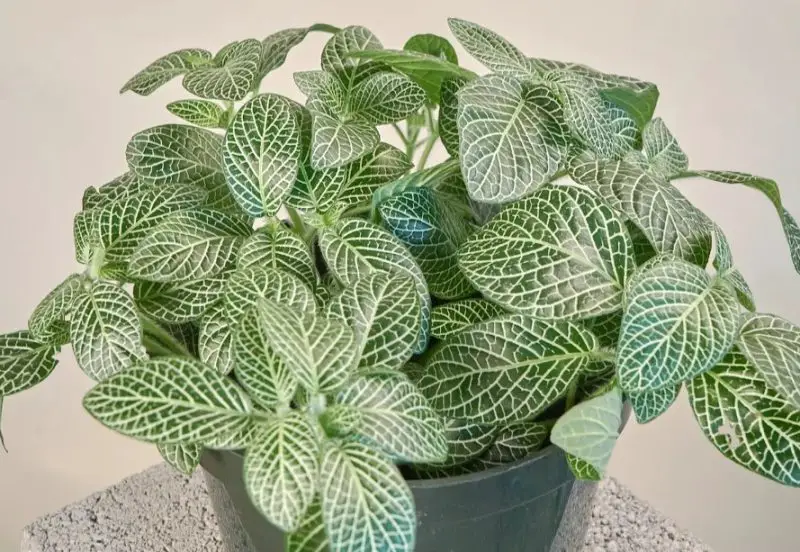
The Nerve Plant, or Fittonia, features small, vividly colored leaves with contrasting veins. Its dark green, elliptical leaves are adorned with pronounced white veins, creating a striking visual effect.
Similar to the Polka Dot Plant, Fittonias are often chosen for terrariums due to their attractive foliage. Instead of spots, they showcase bright veins that beautifully stand out among other plants.
While varieties with white veins offer bold contrast, you can also find Fittonias with red veins or pink-tinted leaves. Pairing them with a pink Polka Dot Plant creates an eye-catching terrarium display.
Chinese Money Plant
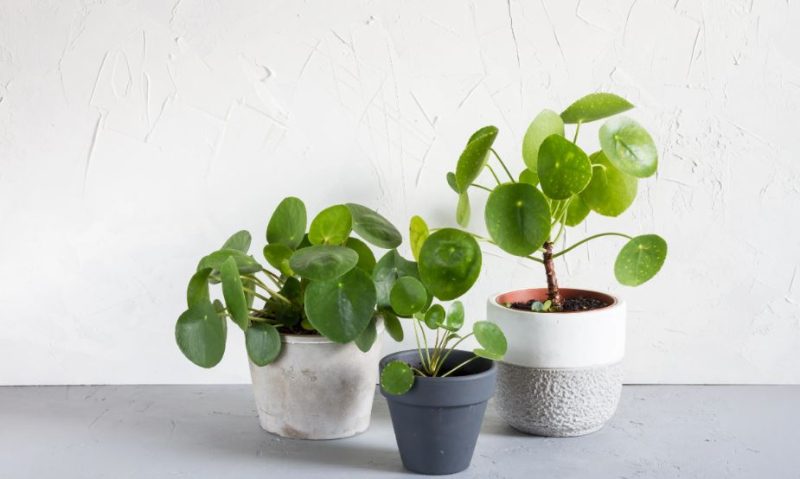
The Chinese Money Plant, or Pilea peperomioides, features round, coin-shaped leaves on slender, upright stems. These bright green leaves, with distinct palmate veins radiating from the center, create a unique appearance.
Thriving in larger terrariums, this plant’s upright growth and love for moisture make it an ideal choice. Known as the pancake or UFO plant, its rounded leaves beautifully contrast with creeping vines or moss.
To add a Chinese Money Plant to a terrarium with a small opening, use a pup. These tiny versions of the parent plant can be easily rooted and planted to create a fuller display.
Maidenhair Fern
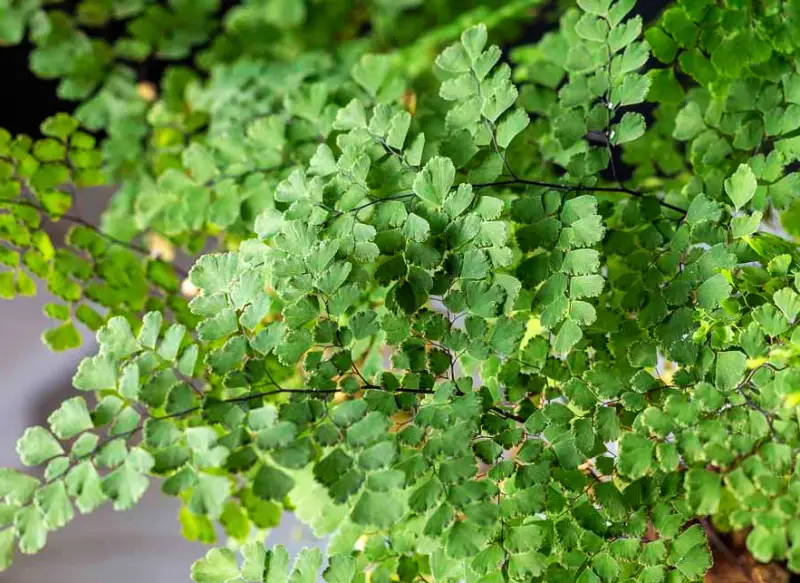
The Maidenhair Fern, or Adiantum raddianum, features delicate, finely divided fronds that resemble soft feathers. Its dark green, lacy fronds add an elegant touch to any terrarium.
Ideal for taller terrariums, this fern’s thin leaves are densely packed on narrow stems, creating a graceful arch. They thrive in moist environments, making closed terrariums perfect for their care.
If you’ve had trouble keeping them alive in dry conditions, a terrarium might be the ideal solution.
Dwarf Arrowhead Vine
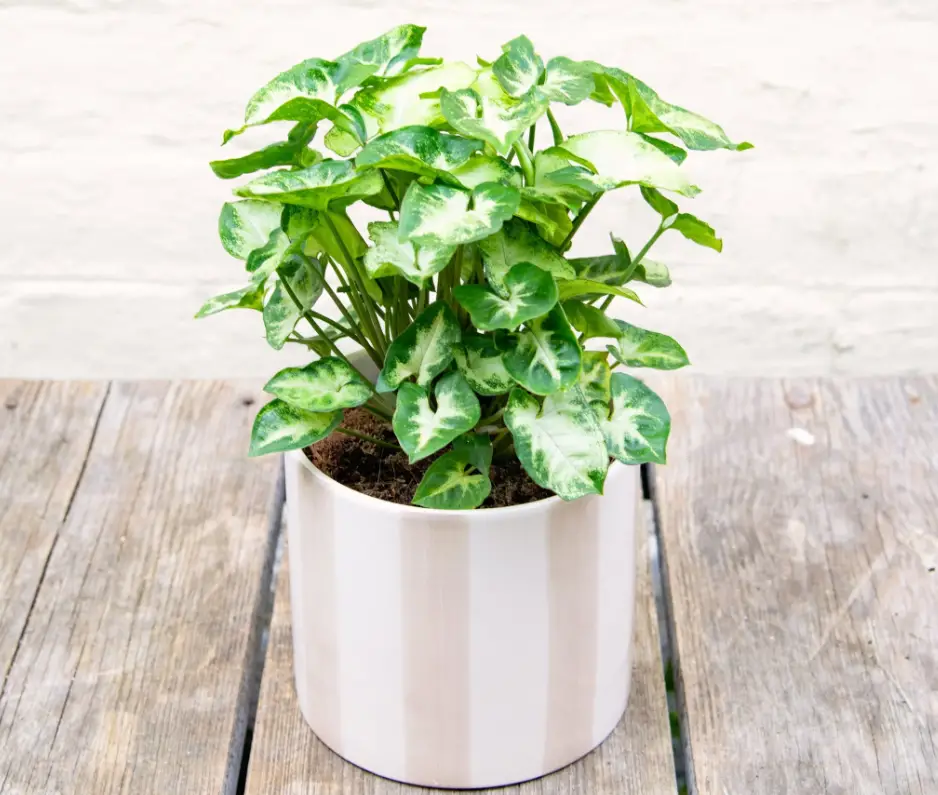
Crocodile Fern
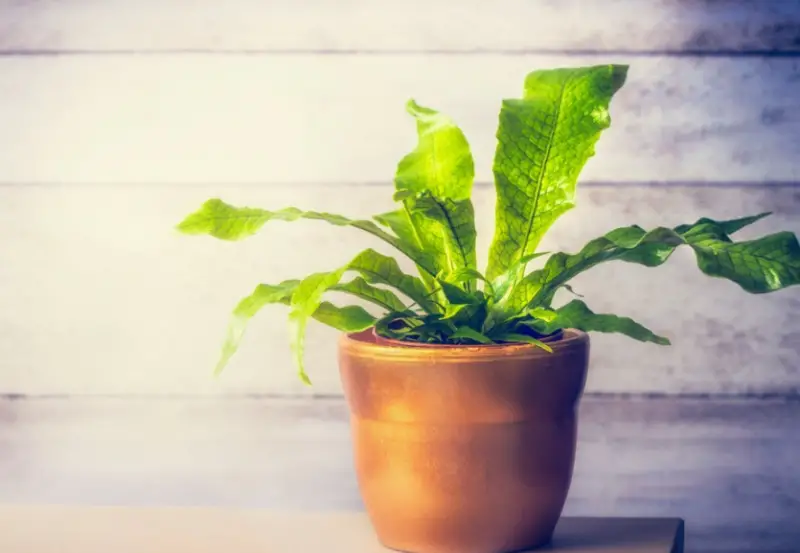
The Crocodile Fern, or Microsorum musifolium, features fronds with scaly patterns resembling crocodile skin, making it a distinctive choice for indoor decor.
This compact fern is perfect for terrariums, thriving in high humidity while preferring well-draining soil to avoid sogginess. Slow-growing and tolerant of small spaces, it does best in medium to bright indirect light, making it a versatile choice for indoor gardens.
Watermelon Vine
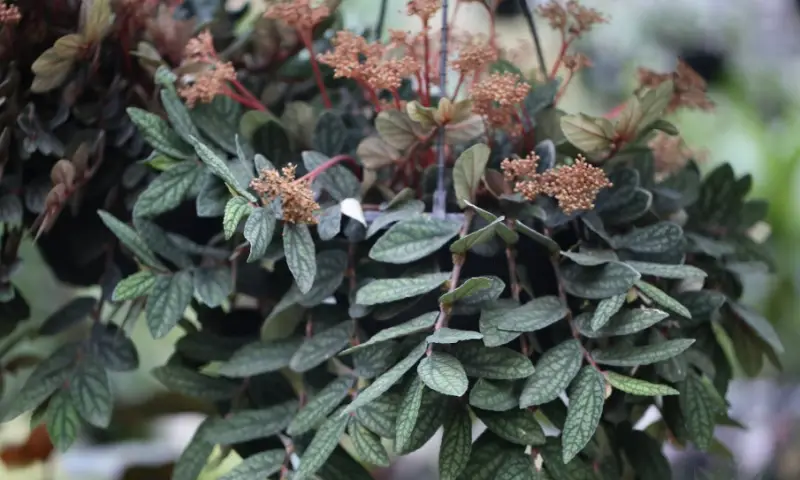
Pellionia pulchra, commonly known as Watermelon Vine, features uniquely variegated leaves resembling watermelon skin, with oval-shaped leaves in vibrant green adorned with striking dark and light green patterns.
This plant thrives in terrariums, requiring stable, high-humidity conditions to flourish. Unlike the edible watermelon vine, Pellionia pulchra is ideal for small glass environments.
Though it can be challenging to find and maintain, this vine loves the consistent humidity of terrariums. It is sensitive to environmental changes, making a terrarium the perfect home for this enchanting plant.
Dischidia
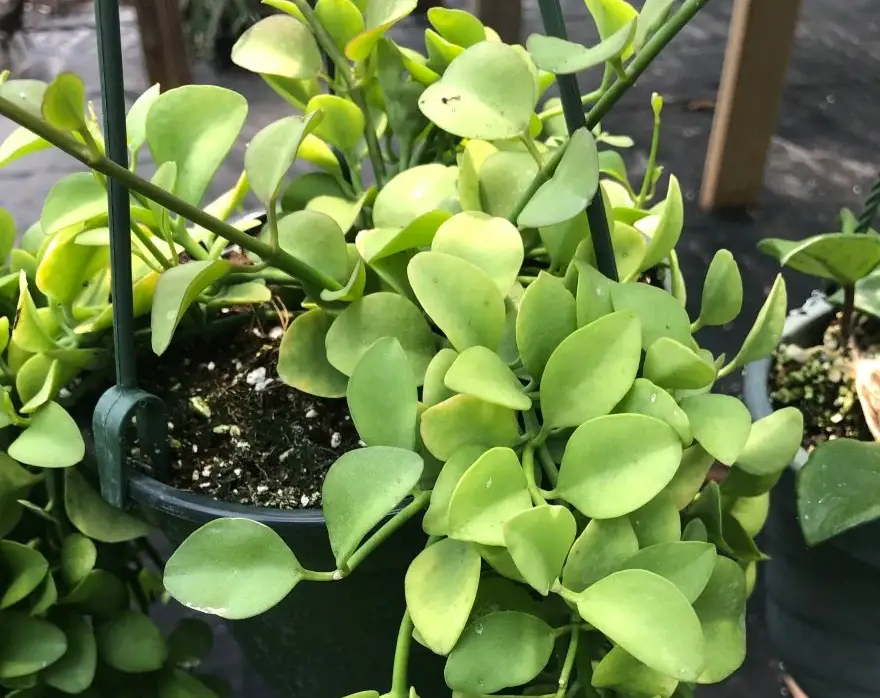
Dischidia plant in a black plastic hanging pot outdoors. This plant features small, round or oval pale green leaves and trailing growth habits.
Dischidia is a low-maintenance genus related to Hoyas. These compact-leaved vines are ideal for open terrariums but require careful watering to avoid rot. Their ability to hold moisture makes them perfect for pairing with taller succulents, helping to fill in gaps in your terrarium display.
Begonia
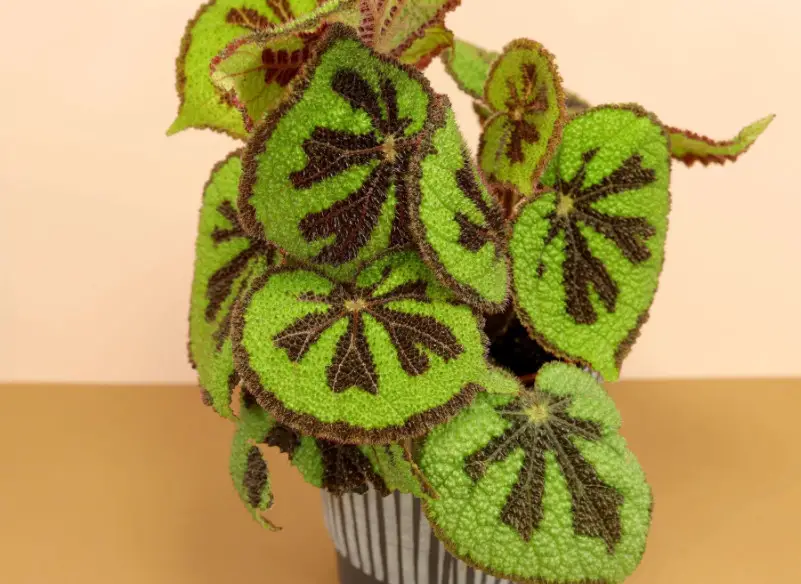
Begonia masoniana is growing in a terrarium among other plants. Known as the Iron Cross Begonia, it features large, glossy deep green leaves with a distinctive dark brown to maroon cross-shaped pattern at the center. The leaves have an asymmetrical oval shape with undulated edges.
Begonias thrive in the warmth and high humidity of closed terrariums, making them a versatile option. With a vast array of shapes, colors, and sizes, you’re likely to find a begonia you adore. Their colorful patterned leaves stand out beautifully, and under the right conditions, they produce lovely blooms as an added bonus.
These tropical plants prefer high humidity, so maintaining moisture levels is essential. Some species are sensitive to overwatering, so monitor the soil to protect the roots.
Prayer Plants
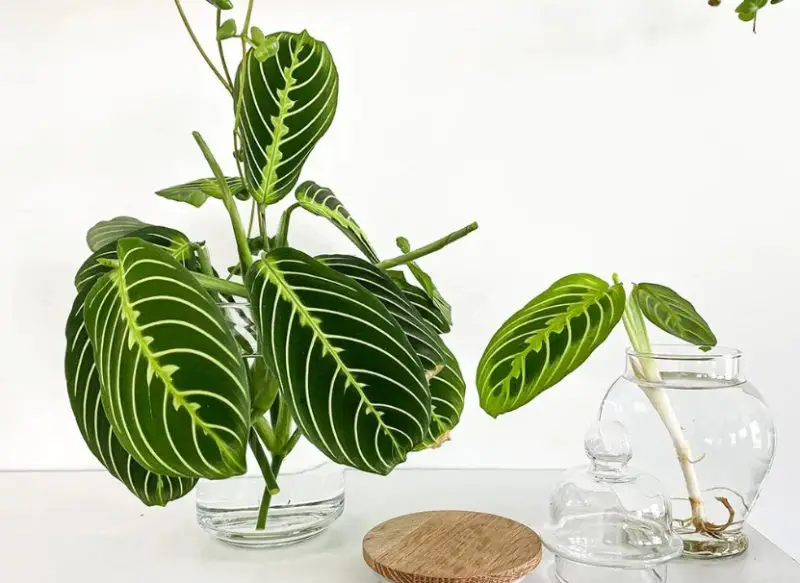
Prayer Plant known scientifically as Maranta, this plant features slender stems and oval-shaped leaves adorned with intricate patterns in various shades of green and contrasting pink veins.
Marantas are easily recognized by their vibrant, tropical foliage, making them ideal for terrariums. They thrive in humid environments, typical of terrarium settings, though their large leaves can take up space. To prevent overcrowding, use them as a central plant paired with lower-growing vines in larger terrariums.
Philodendron micans
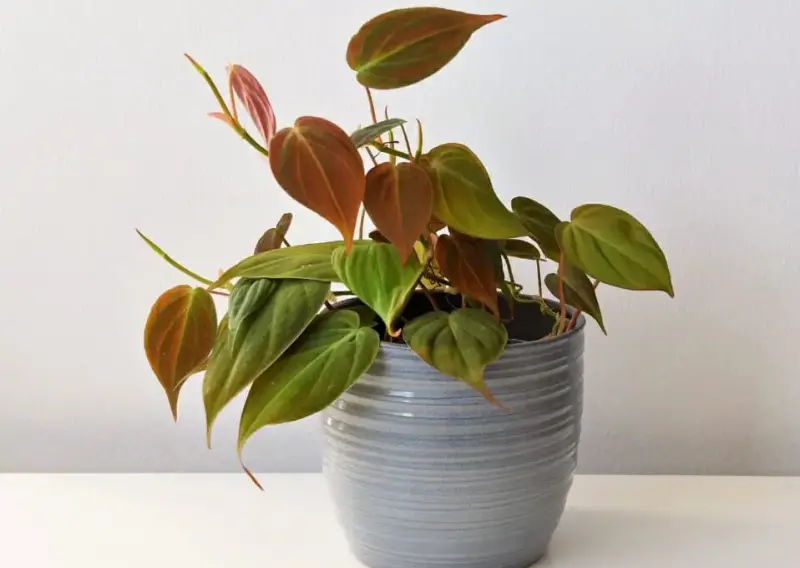
This plant features slender, vining stems adorned with velvety, heart-shaped leaves that shimmer with iridescent hues, enhancing its appeal.
Philodendron micans is a low-maintenance plant, making it ideal for terrariums. Its striking, velvety leaves are eye-catching and can thrive in a large terrarium setup, especially with decorative wood or a low opening to showcase the climbing vines.
Alocasia ‘Bambino’
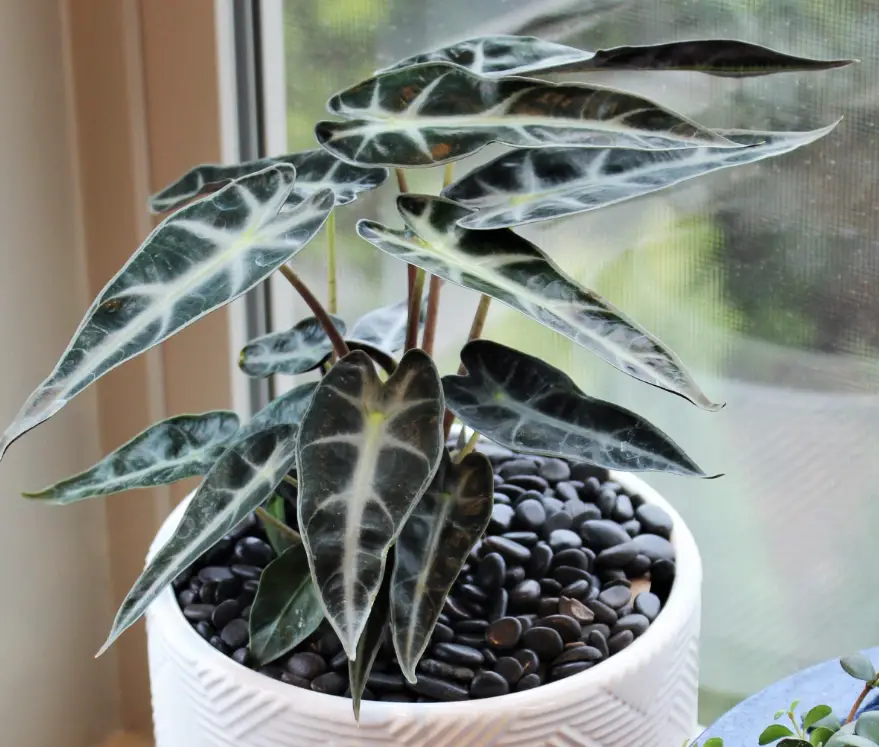
Alocasia ‘Bambino’ is a striking houseplant featuring deep green arrowhead-shaped leaves with contrasting white veins. This compact cultivar of Alocasia amazonica maintains a small size, making it ideal for terrariums, as its colors deepen in bright light, almost appearing black.
Unlike larger Alocasia varieties, ‘Bambino’ is perfect for those seeking to enhance their indoor gardens with a touch of elegance. Its unique leaf pattern and growth habit have made it a favorite among plant enthusiasts.
‘Fluffy Ruffles’ Sword Fern
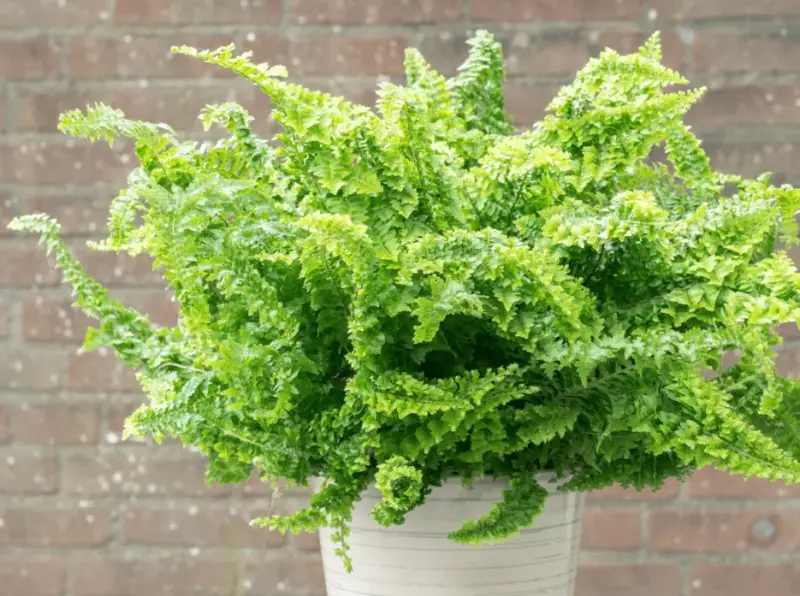
‘Fluffy Ruffles’ Sword Fern (Nephrolepis exaltata ‘Fluffy Ruffles’) features charming, dark green fronds with a distinctive ruffled appearance. This compact cultivar grows to about 12 inches, making it ideal for closed terrariums with high humidity.
While it can be tricky to care for, the moist environment of a terrarium and bright indirect light will help it thrive. Its adorable name perfectly reflects its delightful ruffled foliage, setting it apart from larger sword ferns.
Cushion Moss
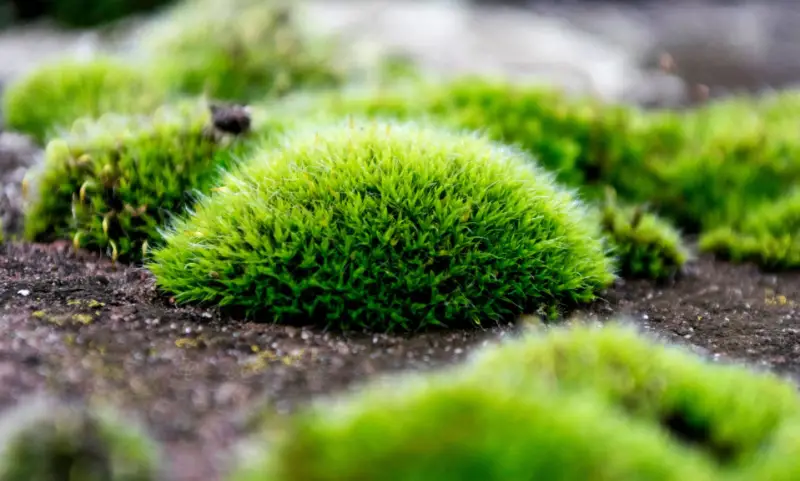
Cushion Moss (Leucobryum glaucum) has a dense, compact form with soft green leaves that grow close to the ground, creating a lush, carpet-like texture. This moss is a staple in terrariums, providing a woodland touch while complementing taller plants.
It doesn’t spread extensively, allowing for careful initial placement. You can either plant it in clumps or cover the soil with a large patch to let it thrive, enhancing the overall aesthetic of your terrarium.
Spikemoss
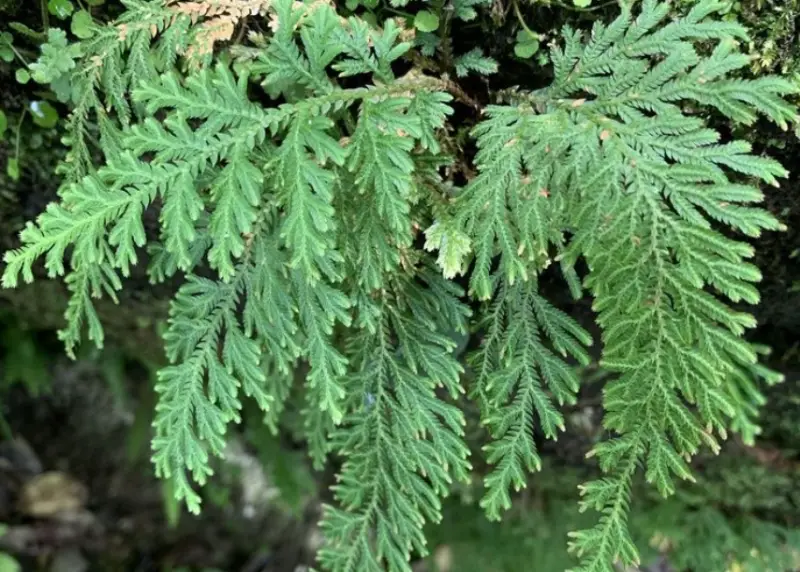
Spikemoss (Selaginella kraussiana) features tiny, feathery green leaves arranged in a dense, fern-like pattern, resembling miniature pine branches. While not a true moss, it thrives in terrariums, making it an excellent groundcover.
This species requires high humidity, bright indirect light, and consistent moisture for optimal growth, which is easily achieved in a closed terrarium. With these conditions, its delicate leaves will remain lush and vibrant throughout the year.
Jade Plant
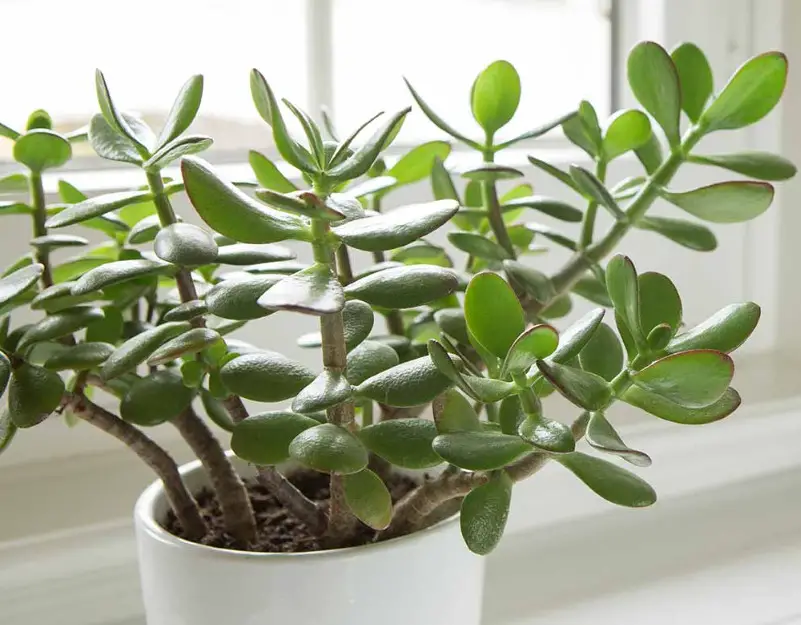
Jade Plant (Crassula ovata) resembles a small tree with a thick trunk and branched stems covered in round, glossy, dark green leaves. This hardy succulent adapts well to various indoor conditions and can thrive in lower light.
While it grows slowly, it can become large over time, making size a consideration for terrarium placement. With proper care, smaller jade plants can comfortably reside in large terrariums before needing relocation.
Haworthia
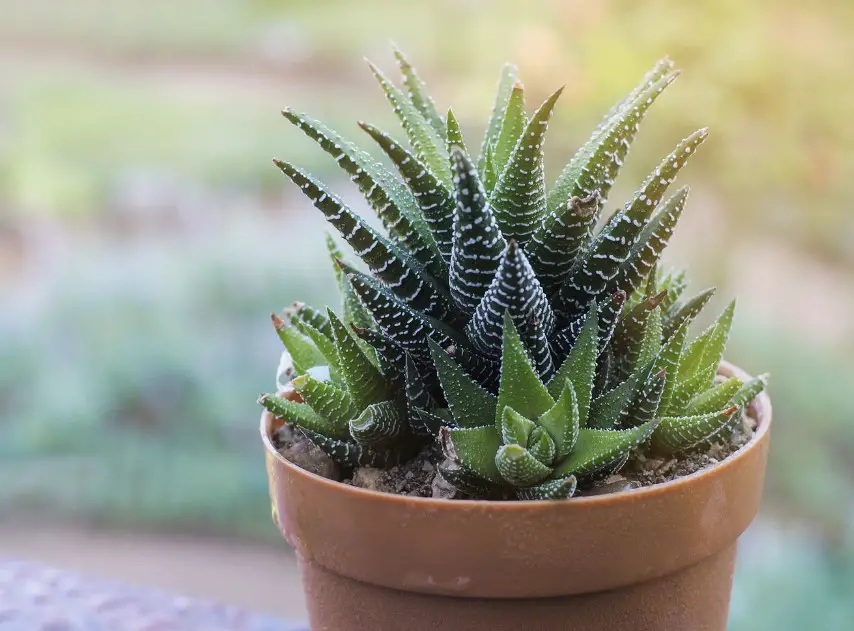
Haworthia, also known as zebra cactus, forms a compact rosette of fleshy, pointed green leaves with white stripes. Its small size makes it ideal for open terrariums. This plant produces offshoots, which can be easily propagated.
Like echeverias, Haworthia thrives in sandy soil with minimal watering. Its spiky, striped appearance and ease of care make it a popular choice for succulent enthusiasts, especially in small spaces.
String of Pearls
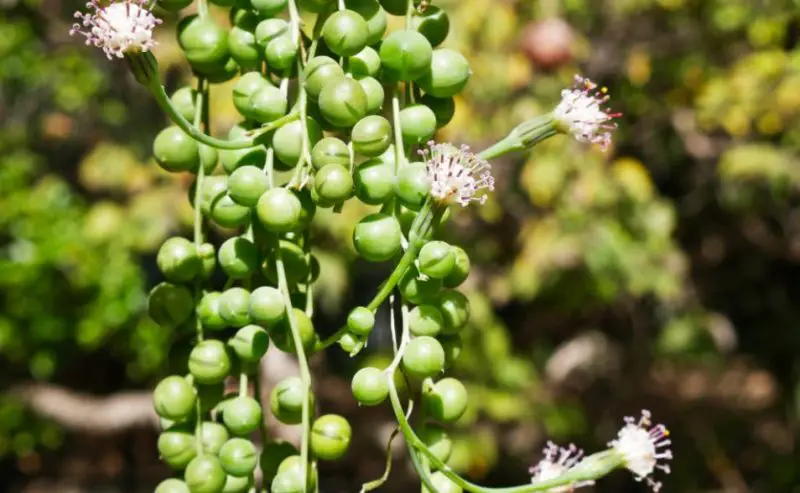
String of Pearls (Curio rowleyanus) features long, trailing stems adorned with small, bead-like, light green leaves resembling pearls. This draping plant thrives in lower light, making it ideal for terrariums with low openings.
It’s popular among houseplant enthusiasts for its delicate, hanging appearance and tolerance for less light. To prevent the leaves from spacing out, place it in bright light. String of Pearls looks great when planted on the edge of terrariums, paired with taller succulents.
Hens and Chicks
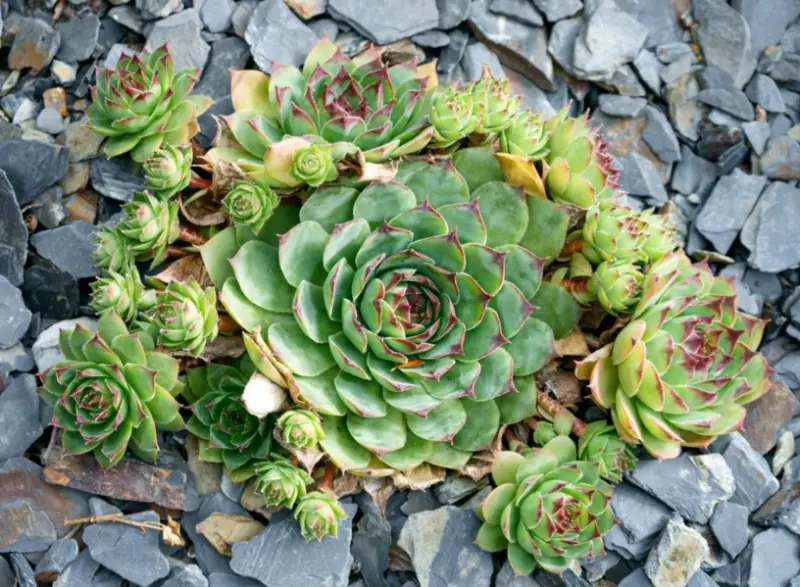
Hens and Chicks (Sempervivum) form compact, round rosettes of bright green, triangular leaves with purple-tipped points. Known for their geometric appearance, these low-maintenance plants are ideal for open terrariums. The name comes from the small offshoots, or “chicks,” they produce around the base, perfect for propagation.
To enhance their look, cover the soil with decorative gravel, which also helps maintain the gritty, well-draining conditions they need to thrive.
Panda Plant
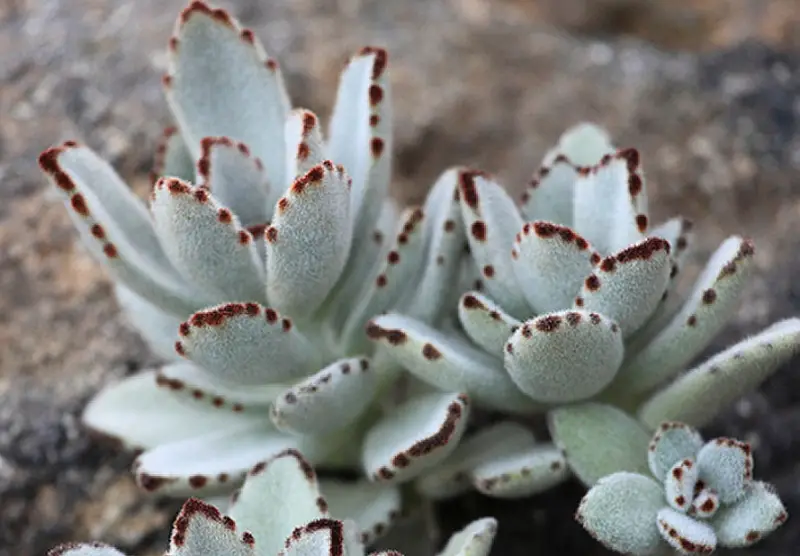
The Panda Plant (Kalanchoe tomentosa) forms vertical stems with fleshy, oval gray leaves covered in a soft, fluffy texture, accented by brown-orange dots along the edges. Ideal for taller open terrariums, it adds height and charm with its unique, velvety foliage.
Known by cute cultivar names like ‘Chocolate Soldier’ and ‘Teddy Bear,’ this succulent’s fluffy leaves make it a favorite among collectors, bringing both beauty and a soft touch to any display.
Burro’s Tail
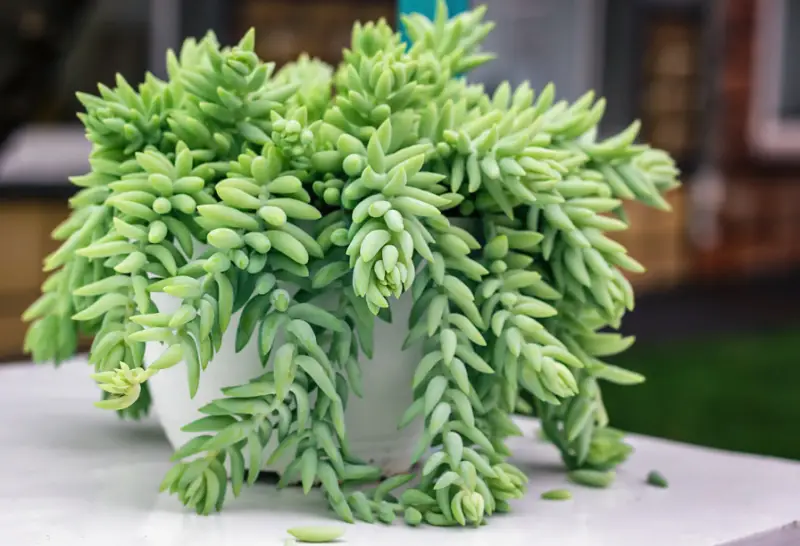
Burro’s Tail (Sedum morganianum) is a trailing succulent with long stems densely covered in blue-green, plump, cylindrical leaves. Often planted in hanging pots or terrariums, its vines can drape gracefully out of openings. This popular succulent, resembling tails, thrives in bright light with minimal watering.
Like String of Pearls, it’s perfect for open terrariums where the vines can cascade. Ensure enough light to prevent stretching and leaf drop, making it a striking choice for any space.
Sphagnum Moss
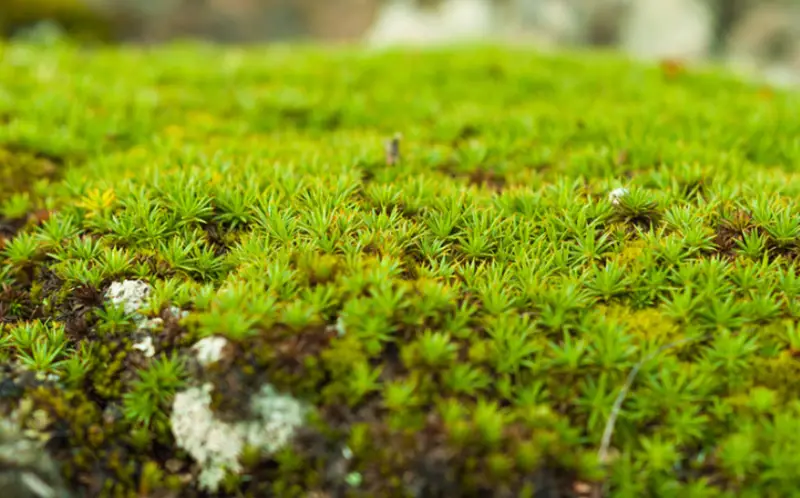
Sphagnum Moss features soft, feathery green leaves that create a dense, carpet-like appearance. Often used in gardening as dried or peat moss, live sphagnum moss is a valuable addition to closed terrariums.
It thrives in high humidity and requires regular watering to prevent drying out. Pairing it with moisture-loving plants enhances its lush, vibrant look in terrarium settings. While it may be hard to find, it’s well worth adding to your collection.
Peacock Spikemoss
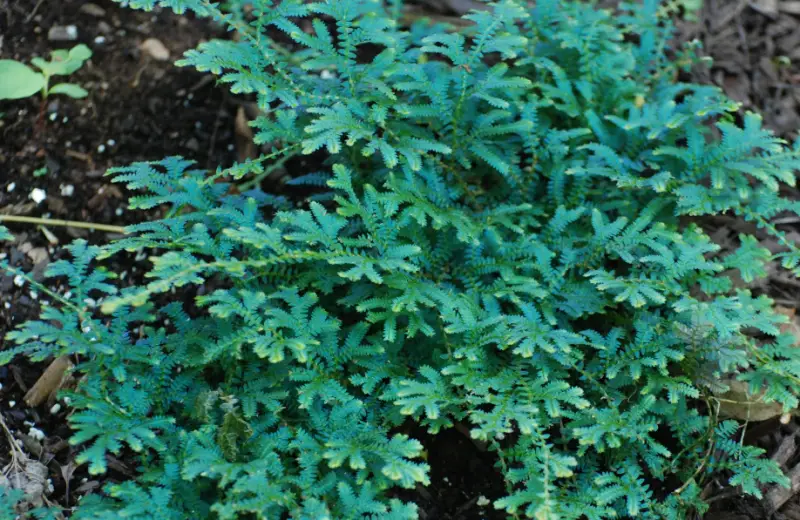
Peacock Spikemoss (Selaginella uncinata) features striking blue-green foliage with an iridescent quality. Its tiny leaves create a dense mat, resembling the vibrant colors of peacock tail feathers. This resilient plant thrives in low light and wet conditions, making it ideal for terrariums.
With time, its leaves will develop a unique iridescent hue, adding visual interest. Use Peacock Spikemoss as a standout feature plant or ground cover among taller plants for a captivating display.
Mood Moss
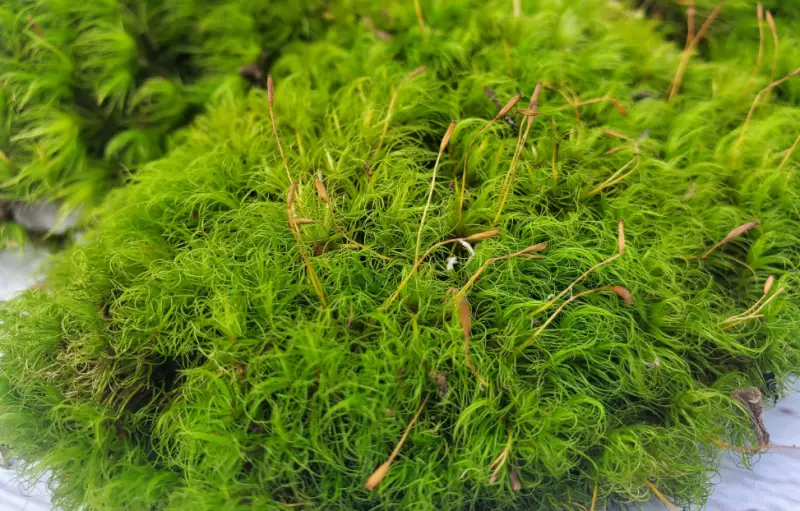
Mood Moss (Dicranum scoparium) features soft, feathery leaves that form dense, cushion-like mats in vibrant green. This true moss thrives in closed terrariums, requiring consistent moisture to flourish. Its captivating texture makes it a delightful touch, but it’s best kept in a controlled environment to prevent drying out.
Known for being somewhat fussy, Mood Moss needs attentive care; however, a closed terrarium helps maintain the ideal humidity levels to keep it lush and healthy.
Tillandsia
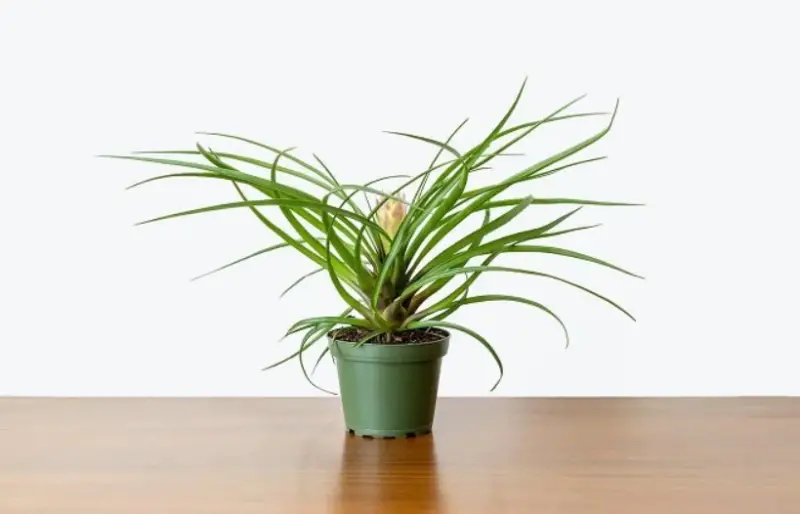
Tillandsia (air plants) feature slender stems and long, narrow, gray-green leaves with a slight whitish coating. These unique plants thrive in well-lit, open environments, making them ideal for open terrariums.
Unlike many terrarium plants, Tillandsias cannot handle enclosed spaces. They add architectural flair to glass containers, especially when attached to driftwood. Simply place the driftwood on decorative gravel, and you’ll create striking living décor that requires only occasional misting and bright light to thrive.
Echeveria
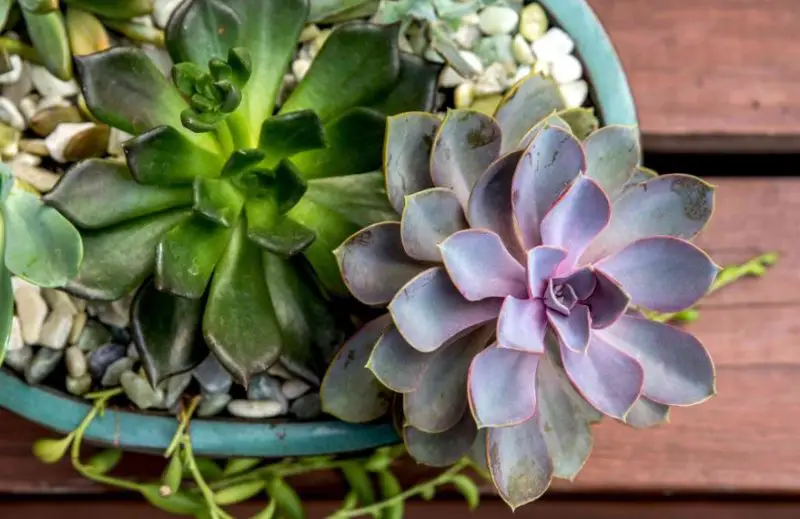
Echeveria forms a round rosette resembling a rose, with large, fleshy leaves that are bright green with pinkish edges. Popular in open terrariums, Echeveria succulents are favored for their compact shapes and attractive colors.
They thrive in well-draining soil, so it’s important to layer the terrarium to prevent excess moisture at the base. To water them without risk of rot, use a straw to deliver water directly to the roots.

